We recently refitted the Winnebeggo to include a lot of new roost bars that were needed to accommodate all the new hens that will be calling the Winnebeggo home this summer.
All the new roost bars made it necessary to remove the 55 gallon barrel that was the heart of the winnebeggo’s watering system. Couple this with the fact that accessing the 30 pound hanging feeders under the sides of the Winnebeggo was becoming a pain in the neck, and we began to dream up a different solution to keeping the chickens fed and watered out on pasture.
And so the Chuck Wagon was born. We acquired an extra running gear last year for a good price, so we promptly added a few 4×4’s to form a solid base and strapped on the single biggest water container that we have.
The chickens now enjoy a massive 325 gallon water reservoir in the form of a big IBC tote that we intended to use this past winter for the Mega-Waterer 2.0
As with anything that’s going to be bumping around the pasture, keeping things in their place is always a concern. We (probably) addressed this well enough with a big handful of conduit clamps.
The water distribution is pretty simple given the relatively compact layout of the chuck wagon. The IBC tote feeds two waterers, each housing 10 nipples each.
There is also a hose with it’s own valve. The hose has the Plasson quick-connect fitting that allows us to fill the tote with water from any of our pasture water fittings. This also allows us a hose to fill up the dog’s water bowl, or give something a quick rinsing-off out in the pasture.
And that brings us to the other half of the chuck wagon equation, the feed. Bedecking the chuck wagon in a dozen or so hanging feeders didn’t sound like a great idea, so we had to come up with another kind of feeder.
We ended up with a pair of big hoppers made out of 1/2″ pressure-treated plywood. The hoppers are 4′ wide, 21″ across the top and 3″ wide at the bottom.
Oh, and each hopper has a bottom that’s made out of a 1″x10″ on the bottom and 1″x6″ sides. To keep it all upright during it’s pasture travels, both hoppers are braced together and to the 4×4 beams.
After adding a few bits of roof to the feeders, it was nearly time to fill them up with feed to see how much they’d hold.
The answer we got was 21 buckets, or about 650# of feed in each feeder, for a total of 1300 pounds. Between the 1300# of feed and the 325 gallons of water, we’ve cut down our labor in feeding and watering chickens significantly.
The Chuck Wagon was not without it’s shortcomings. The first few days of use saw several intense rainstorms, which pointed to a need for more protection for the bottom of the feeders.
We quickly sorted it all out with a few extra scraps of metal roofing.
The chickens approve.
All 450 of them have been out on pasture for nearly a week now and they appear to be quite happy.

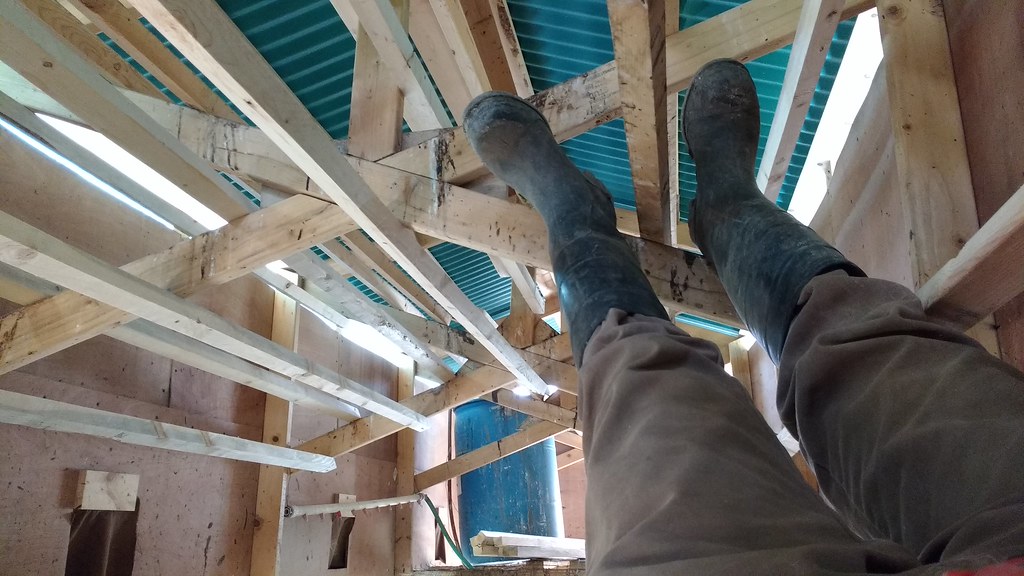
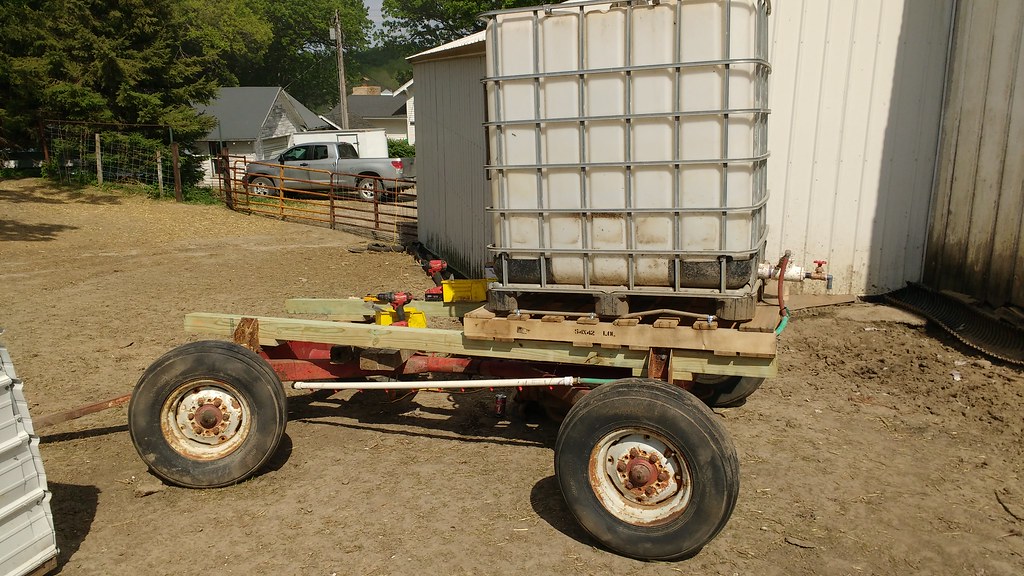

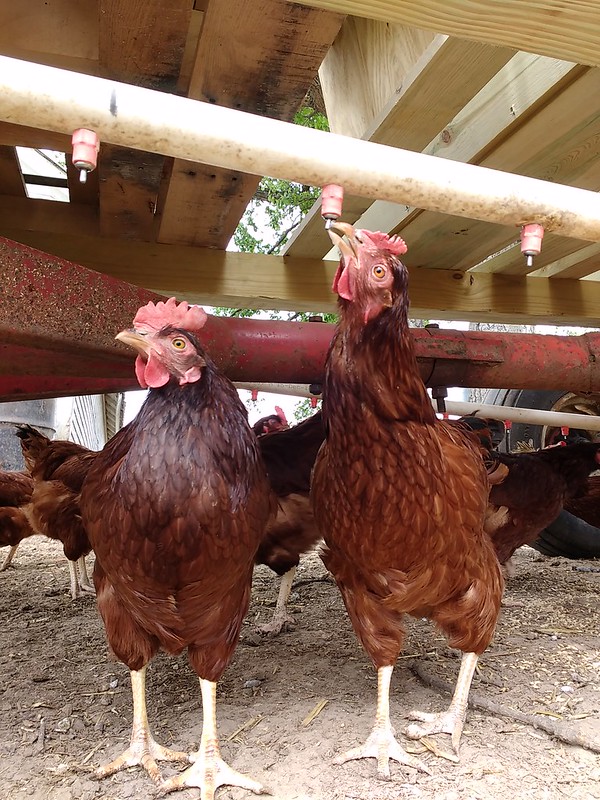
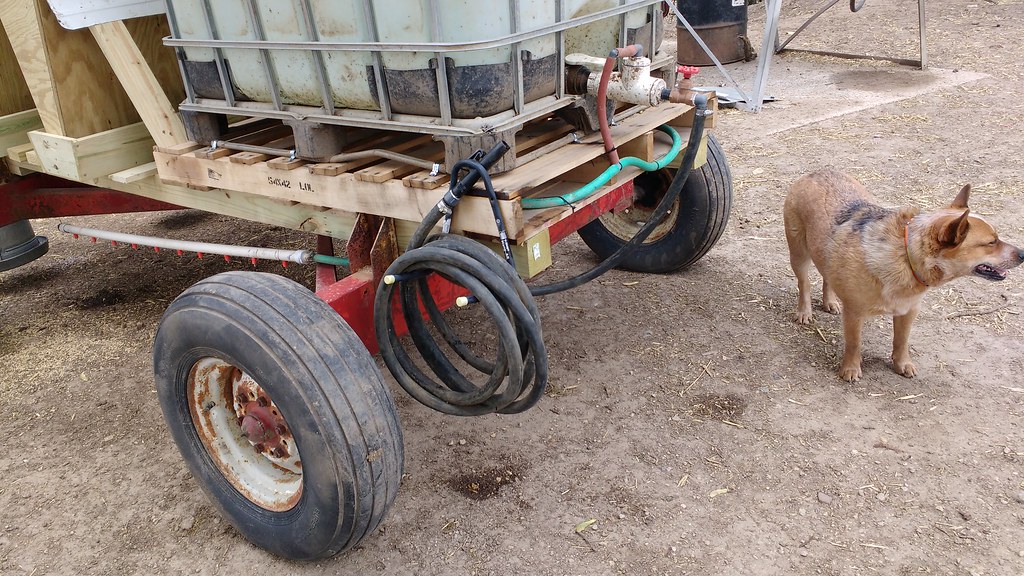






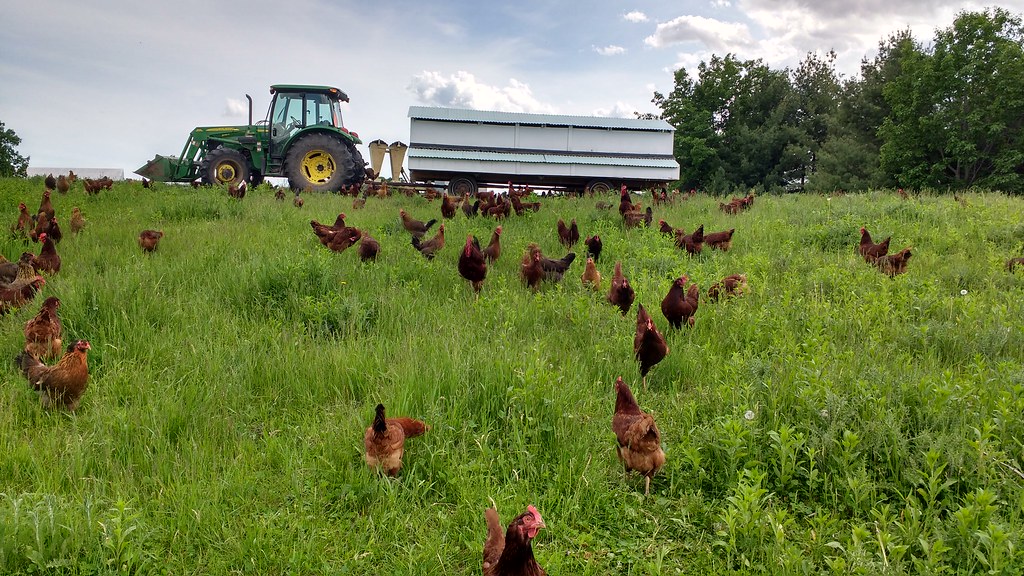
You guys never cease to amaze me on how you figure all this out. The chickens are BEAUTIFUL
Slick setup, Andrew! Nice seeing all those red hens on the green pasture.
Are you bothered by varmints at all? Are the chickens all locked in every night in the dorms out in the pasture? Love the chuck wagon! Did you get an egg washer?
Andrew, you are a (demented) genius. Love seeing your creative efforts!